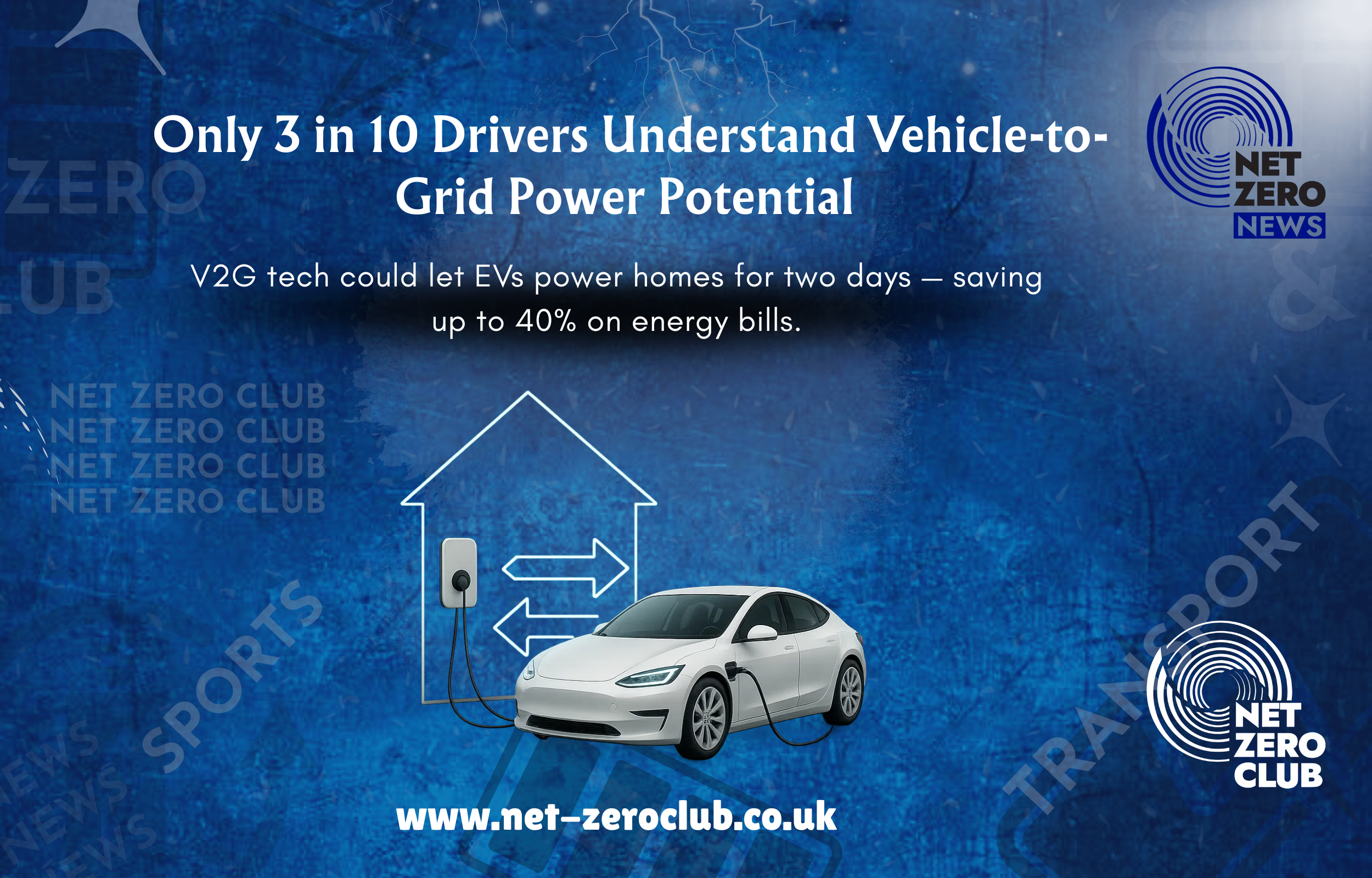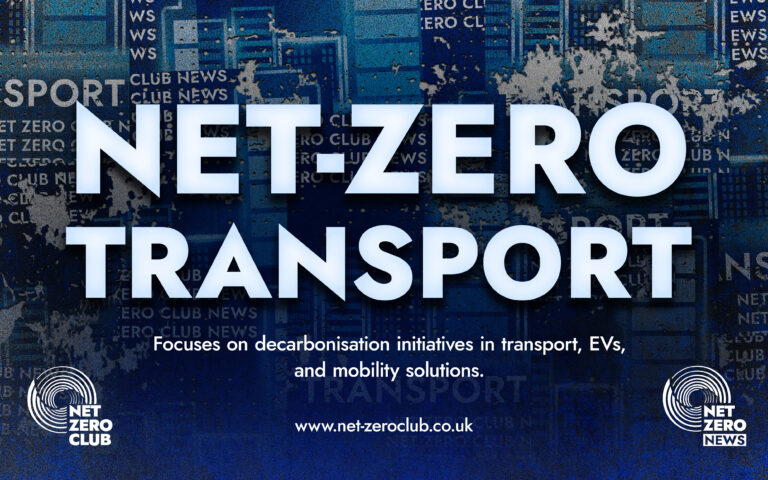70% of Drivers Unaware of Vehicle-to-Grid Benefits

Welcome, Net Zero News readers,
In a world increasingly focused on sustainability and energy efficiency, a surprising revelation has emerged: seven out of ten individuals are unaware of a groundbreaking technology that could transform their relationship with energy consumption. This technology, known as vehicle-to-grid (V2G) bidirectional charging, has the potential to empower electric vehicle (EV) owners to not only charge their cars but also utilise them as a backup power source for their homes, capable of supplying energy for up to two days. In addition, it could lead to significant savings on energy bills.
This eye-opening information comes from a pioneering V2G pilot project currently underway in Europe, specifically leveraging V2G-ready bidirectional charging technology from Easee. This initiative aims to revolutionise how electric vehicles interact with the energy grid, ultimately paving the way for a smarter, more efficient energy landscape.
The study forms part of the PAVE (Implementation of Vehicle-To-Grid Services) project, which has uncovered a startling truth: most drivers remain unaware that their electric vehicles represent a significant yet untapped energy resource. The research indicates a pressing need for greater awareness and understanding of V2G technology among EV users and the general public.
Imagine this: with the right V2G solutions, such as Easee’s Max and Pro chargers, homeowners can implement smart charging strategies that could drastically reduce their energy bills. By charging their vehicles during off-peak electricity tariffs at night, they can store this energy and use it to power their homes during peak rate periods, potentially saving hundreds of pounds each year. This not only makes economic sense but also contributes to a more sustainable energy system.
Anthony Fernandez, CEO of Easee, eloquently encapsulated the excitement surrounding this technology. “When we tell people their car could power their home for two days, or that they could charge cheaply at night and avoid paying peak prices during the day, the reaction is always amazement,” he noted. “This is one of the biggest missed opportunities in home energy management – and pilots such as PAVE are essential to show how it can become a reality at scale.”
Even among seasoned electric car users, the findings are striking. Only 16% of EV drivers with over three years of ownership grasp the concept of bidirectional charging. This highlights a significant knowledge gap, suggesting that even those who are most familiar with electric vehicles are not fully aware of the transformative capabilities that V2G technology offers.
The PAVE initiative, funded by Vinnova and launched in late 2023, is currently testing its hypotheses in Gothenburg, Sweden. This two-year pilot project assembles a diverse consortium of partners from the entire electrical grid and charging ecosystem, aiming to develop scalable V2G solutions that can be rolled out across Europe.
Among the key partners in this initiative is Polestar, which is contributing V2G-capable Polestar 3 vehicles and spearheading the development of Virtual Power Plant solutions for large fleet management. Easee is also playing a pivotal role by providing its V2X-ready charging technology to enable bidirectional energy flow, ensuring that this innovative system can be seamlessly integrated into everyday life.
Critical infrastructure partners include Svenska Kraftnät (the Swedish National Grid), which is investigating the impact of V2G technology on ancillary service markets; Vattenfall Eldistribution, exploring standardisation and grid-level effects; and Göteborg Energi Nät, focusing on local grid capacity support and congestion management. Additionally, Chalmers University of Technology contributes vital research on customer engagement and energy scheduling strategies, ensuring that the project is grounded in both practical and theoretical insights.
The PAVE project exemplifies how V2G technology can create a sophisticated energy management system. The setup is relatively straightforward: during off-peak hours, when electricity is most affordable, the smart charger automatically fills the car’s battery. When household energy demand peaks and grid electricity prices surge, the system intelligently switches to utilise the car’s stored energy, powering the home and helping to mitigate costs.
With the average UK household spending over £880 annually on electricity, the potential for smart V2G bidirectional charging to reduce these costs by up to 40% is remarkable. Furthermore, this technology could provide complete energy independence during power outages, offering a reliable backup source of energy when we need it most.
Research conducted as part of the PAVE project, which involved 563 Swedish drivers, revealed that owners of solar panels are among the most promising early adopters of V2G technology. Approximately two-thirds (65%) of Swedish EV pioneers already have solar installations, creating an ideal ecosystem for maximising energy cost savings. This synergy between solar energy generation and V2G technology represents a significant opportunity for households looking to lower their energy expenses while contributing to a greener future.
For homes equipped with both solar panels and energy storage solutions, V2G bidirectional charging technology offers a trifecta of benefits: free solar charging throughout the day, economical grid charging during off-peak hours, and the potential to sell stored energy back to the grid during peak demand periods. This not only enhances energy security but also positions households as active participants in the energy market.
“The insights from PAVE show that successful bidirectional charging deployment requires technology that works intuitively from day one,” added Fernandez. “Our Max and Pro chargers are designed to make this revolutionary capability as simple as plugging in your phone – but with the potential to transform your entire household energy strategy.”
As the PAVE project continues through 2025 and beyond, the consortium anticipates delivering practical solutions that will ultimately turn every electric car into a smart energy asset for its owner. In doing so, they aim to create a more resilient and sustainable energy future for all.
In conclusion, as the world moves towards a more sustainable energy landscape, the integration of V2G technology into our daily lives holds immense promise. By empowering electric vehicle owners to harness the energy stored in their cars, we can unlock a wealth of opportunities for savings, energy independence, and enhanced resilience against power outages. The future of energy management is here, and it is time to embrace the change.

 Got net-zero news, project updates, or product launches to share?
Got net-zero news, project updates, or product launches to share? 

